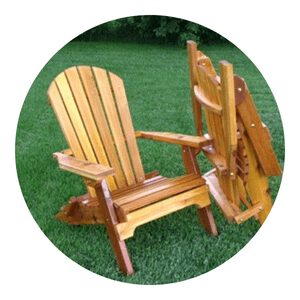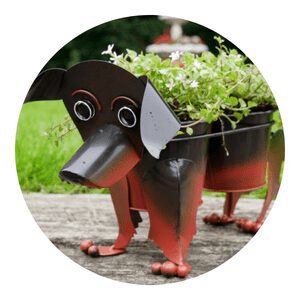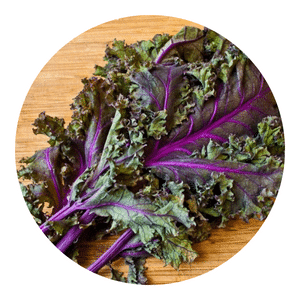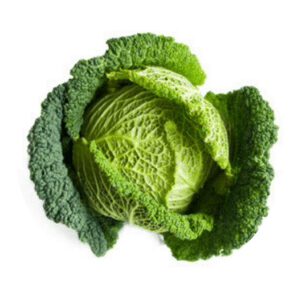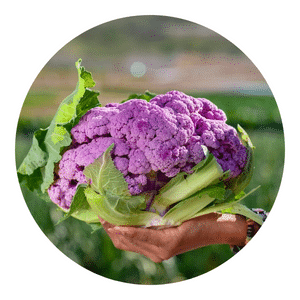How to prepare your garden for winter
Chappy the Gardener’s latest guide, “How to Prepare Your Garden for Winter,” offers tips and tricks for getting your garden ready for the colder months.
From choosing the right plants to mulching and more, Chappy covers everything you need to know to keep your garden healthy and happy all winter long.
With over 20 years of experience in the gardening industry, Chappy is an expert on all things plants.
His guide is a must-read for anyone looking to get their garden ready for winter.
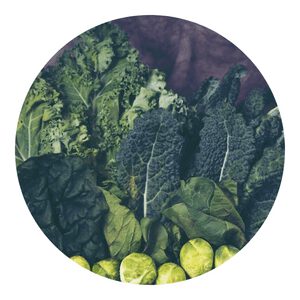
Winter Menu
What to do in the garden in autumn to prepare for winter
In the autumn, it is important to do some preparation in the garden to get ready for winter.
One of the most important things to do is to rake up all of the leaves and clear away any debris.
This will help keep your garden looking neat and tidy, and will also make it easier to shovel snow in the winter.
You can also use this time to transplant any plants that need moved, and to add some compost or mulch to your garden beds.
By preparing your garden ahead of time, you can ensure that it stays healthy and looks great all winter long!
Remove debris
Clear away any dead plants or leaves
Fall is a time of year when homeowners should take the time to remove debris from their yards. This includes removing any dead plants or leaves.
Removing this debris will help to clear the way for new growth and will also make your yard look neater. It is also important to rake up any leaves that have fallen in your yard.
Leaving leaves on the ground can create a breeding ground for insects and can also cause mold to grow.
Mulch
Add a layer of mulch to protect your plants
One of the best ways to protect your plants from the cold weather is to add a layer of mulch.
Mulch is a layer of material that is spread on the ground around plants. It helps to insulate plants from the cold, and it also helps to keep the soil moisture levels consistent.
There are many different types of mulch that you can use, such as bark, leaves, straw, and compost.
Weeds
Remove any weeds before they have a chance to spread
Weeds can be a major nuisance in the garden. If left unchecked, they can quickly take over and choke out other plants.
The best way to deal with weeds is to remove them before they have a chance to spread. This can be a time-consuming task, but it is well worth it in the end.
There are several ways to remove weeds, including hand pulling, hoeing, and using herbicides.
It's time to prepare the garden for winter The days are shorter and the temperatures are colder The perennials are dying back and the annuals are going to seed It's time to clear out the debris and tidy up the beds Cut back the dead plants and pull up the weeds rake up the leaves and mulch the beds Now is the time to prepare for next year So your garden will be beautiful once again.
Chappy The Gardener
Organic Fertilize
Feed your plants one last time before winter sets in
As the days get shorter and the temperatures start to drop, it’s time to give your plants one last feeding before winter sets in.
An organic fertilizer will help them store up energy for the cold months ahead.
The best time to fertilize is just after a rainstorm, when the ground is wet and the fertilizer can be easily absorbed.
Be sure to read the instructions on the package, and follow them carefully. Too much fertilizer can be harmful, so it’s important to apply it sparingly.
Pruning
Prune any overgrown plants and dead branches
A garden should be an oasis of relaxation and peace.
Unfortunately, many gardens are cluttered and overgrown, making them difficult to maintain and requiring more time and effort than necessary.
Regular pruning is essential for keeping a garden looking neat and tidy. Prune any overgrown plants and dead branches.
Remove any weeds or debris that has collected in the garden. Trim the lawn as needed and edge the borders of the garden with a sharp hedge trimmer.
Keeping a garden well-maintained requires regular attention, but it is well worth the effort for the improved appearance and increased enjoyment of the space.
Watering
Make sure your plants are watered regularly before winter arrives
As the days grow shorter and the weather starts to cool, it’s important to remember to water your plants regularly.
If plants don’t get enough water, they may not survive winter.
Make sure to check the soil moisture levels often, and water plants when the soil feels dry to the touch.
Tips on how to prepare your garden for winter
If you live in a temperate climate, you may not even know that winter is coming until the first snowfall.
Nevertheless, it’s time to prepare your garden for the cold months ahead.
Here are six tips for ensuring a successful gardening season in the winter:
1. mulch your plants with straw or leaves to protect them from the cold ground and frost
2. cover crops like legumes or brassicas with soil to create an insulation layer
3. rotate crops so that they are used to different climates
4. plant root crops like carrots or potatoes
5. mulch your garden with straw to protect the soil from the cold ground
6. turn the soil to prevent moisture loss.
What to do with vegetable garden in winter
The vegetable garden can be a great addition to any home, but what do you do with it in the winter?
There are a few things you can do to keep your garden going during the colder months.
One option is to cover your garden with a tarp or blanket. This will help to protect your plants from the cold weather and frost.
You can also add some insulation around your plants to keep them warm. Another option is to bring your plants inside.
You can either put them in a sunny spot in your house or in a greenhouse. If you choose this option, make sure to water them regularly.
What vegetable plants can you over winter?
There are a number of vegetables that can be over wintered, which means they can be grown in cold weather conditions.
Some popular vegetables that can be over wintered are kale, broccoli, cabbage, and Brussels sprouts.
These vegetables can all be grown in cold weather conditions because they have a high tolerance for cold temperatures. In addition, these vegetables can also tolerate frost and snow.
Broccoli
It is possible to overwinter broccoli vegetable plants in the garden.
The plants will die back in the cold weather, but will regrow in the spring.
To ensure a successful overwintering, make sure to mulch the plants well and water them regularly.
Cabbage
Cabbage vegetable plants can over winter if they are properly taken care of.
The key to overwintering cabbage is to keep the soil around the plants moist, but not wet. If the weather is cold and dry, you may need to water the plants every few days.
Mulching the plants with a layer of straw or leaves will also help keep the soil moist and warm.
Cabbage plants that are over wintering should be fertilized once a month with a Organic fertilizer.
Cauliflower
Cauliflower is a cool weather crop that can be planted in early spring and late summer/early fall.
The vegetable plants can over winter, but the heads may not be as big as those that were planted in the spring.
If you want to plant cauliflower in the late summer or early fall, you will need to start the seeds indoors about six weeks before the last frost date.
Kale
Collard greens
Collard greens are a hardy vegetable that can overwinter in many parts of the country. They are a cool weather crop and do well in the winter months.
Collard greens can be grown from seed or transplanted from existing plants. They prefer a soil that is rich in organic matter and does well in full sun or partial shade.
Collard greens can be harvested at any time, but are best when they are young and tender.
Mustard greens
Mustard greens are a cool weather vegetable that can be grown as a winter crop in many parts of the country.
The plants will tolerate light frosts and can over winter in many areas. In the spring, the plants will bolt (send up a flower stalk) and produce seeds.
The seeds can be collected and saved for next year’s planting.
How do you winterize a raised garden bed?
When the colder months of the year settle in, it’s time to start thinking about how to winterize your raised garden bed.
This is important, as not taking the necessary precautions can lead to damage and even ruin your garden come springtime.
Here are a few tips on how to winterize your raised garden bed:
1. Start by removing all of the soil from the bed and rinsing it off well. This will help get rid of any pests or diseases that may be lurking in the soil.
2. Next, add a layer of mulch to the bed. This will help keep the soil warm and protect it from freezing temperatures.
3. If you have any plants that are still growing in your garden, be sure to bring them inside before the temperature drops too low.
Do any vegetables come back every year?
There are a lot of vegetables that come back every year, but there are also some that don’t.
The vegetables that come back every year are usually the ones that are planted in the ground, like potatoes and carrots.
The ones that don’t come back every year are usually the ones that are planted in pots, like tomatoes and peppers.
How do you use a greenhouse in the winter?
Greenhouses are used to extend the growing season for plants. They can be used in the winter to keep plants warm and to protect them from the cold weather.
There are different ways to use a greenhouse in the winter.
One way is to have a heating system that will heat the air inside the greenhouse.
Another way is to have a heating system that will heat the soil inside the greenhouse.
Preparing your greenhouse for winter
As winter approaches, it is important to take steps to prepare your greenhouse for the cold weather.
One important step is to clean the greenhouse and remove any debris that has built up over the summer.
You should also check the greenhouse for any damage that may have occurred during the summer and repair any damage that is found.
You can also take steps to insulate the greenhouse and protect it from the cold weather.
One way to do this is to install insulation around the windows and doors of the greenhouse. You can also cover the greenhouse with a tarp or plastic sheeting to keep out the cold air.
If you take these steps, your greenhouse will be ready for winter and you can continue to enjoy gardening even when it is cold outside.
Protecting your plants in a greenhouse during winter
As the cold weather starts to set in, it becomes important to take precautions to protect your plants in the greenhouse.
One way to do this is by using a heater. If you are using a gas heater, be sure to follow the manufacturer’s instructions for safe operation.
Another option is to use an electric heater. When using an electric heater, be sure to use one that is rated for greenhouse use.
This will help ensure that your plants remain healthy and warm during the winter months.
Propagating plants in a greenhouse in winter
Propagating plants in a greenhouse in winter can be a great way to increase the stock of plants for your garden.
By taking cuttings from existing plants and rooting them in a greenhouse, you can create new plants to replace any that die off during the winter.
Additionally, propagating plants in a greenhouse can allow you to grow plants that wouldn’t normally survive in your climate.
Heating your greenhouse during winter
Greenhouses are great for growing plants during the summer, but what about during the winter?
You can’t just leave your greenhouse unheated and let the plants die! In this article, we will discuss some ways to heat your greenhouse during the winter.
One way to heat your greenhouse is to use a space heater. This is a great option if you only have a small greenhouse.
Another option is to use a furnace or boiler to heat the air in your greenhouse. This is a better option if you have a large greenhouse, because it will distribute heat more evenly.
You can also use solar panels to heat your greenhouse. This is a great option if you live in a sunny area. Solar panels can be expensive, but they will save you money on your heating bill in the long run.
Adjusting your planting schedule for a greenhouse in winter
If you have a greenhouse and are looking to get the most out of it during the winter, it’s important to adjust your planting schedule.
There are a few things to keep in mind when doing so.
First, make sure you’re using plants that are suited for growing in a greenhouse during the winter.
You’ll also want to stagger your plantings so that you have new crops coming in every few weeks.
Additionally, make sure to pay close attention to the conditions inside your greenhouse and adjust your planting schedule accordingly.
For example, if it’s cold and cloudy outside, you’ll want to plant plants that don’t need as much sunlight.
Greenhouse pests and diseases in winter
The cold winter months can be a challenge for greenhouse growers, as they must deal with pests and diseases that are not normally a problem during the warmer months.
In order to protect their crops, greenhouse growers must take steps to prevent these problems from occurring.
One way to do this is to use pest and disease control products that are specifically designed for use in greenhouses.
Another is to create a good crop management plan, which includes regular monitoring of plants for signs of pests or disease, and taking corrective action when necessary.
In conclusion, take the time to prepare your garden for winter and you will be able to enjoy it for many years to come.
If you have any questions, please leave a comment below and I will be happy to help.
Click To Grow
Helps Us Grow – Share If You Like













